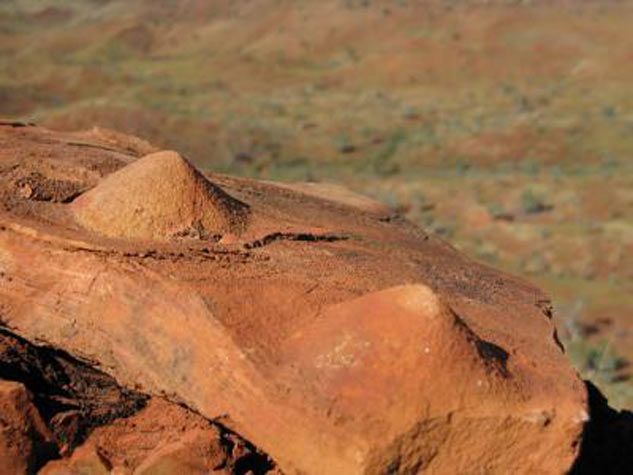Ancient Rocky Structures Built By Microbes

Ancient microbes left quite an impression on Earth. Scientists have found evidence that microbial communities built 3.45-billion-year-old stromatolites, which are layered, rock-like structures of sediment that grow in shallow water.
Dark bands of organic layers — fossilized microbes — were found in stromatolites from the Strelley Pool formation in Western Australia. Combined with other data, the finding suggests that microbes began building the stromatolites just over a billion years after the Earth was formed 4.5 billion years ago, according to researchers from the Caltech and NASA's Jet Propulsion Laboratory (JPL) in Pasadena, Calif.
This new study provides the first evidence of a biological origin for the oldest stromatolites — a subject that scientists have been arguing about for years.
"This is the first evidence that will help reach consensus and convince the community," said Abigail Allwood, a geobiologist at JPL and lead author of the research detailed last month in the Proceedings of the National Academy of Sciences. "This is the most convincing evidence to come out to date."
The presence of organic material itself is not enough to say stromatolites are built by microbial communities. The old stromatolites could be attributed to meteorites or some internal process of the planet. However in these ancient stromatolites, the presence of organic material, its nature and orientation point toward microbial mats as the source, Allwood told LiveScience.
The key to the discovery was the exquisitely preserved microbes at Strelley Pool. Older stromatolites are often beat up and broken down — not an ideal specimen to analyze for organic matter. Young stromatolites — those half a billion years old or so — have an easily visible dark band of organic matter, suggesting they were built by microbes.
A thin film of microbes can grow on the seafloor and construct stromatolites layer by layer. The microbes' surface acts like fly-paper to which sediment particles get stuck.
Sign up for the Live Science daily newsletter now
Get the world’s most fascinating discoveries delivered straight to your inbox.
Passively hording sediment isn't enough though; the microbes also sprout a tangle of filaments that snatch the particles out of the water. The exact time it takes for stromatolites to grow is unknown — Allwood's best guess is that each layer grows annually. The results are dome or column-like sedimentary rock structures that look like giant egg-cartons or upside-down ice cream cones.
The 3.45-billion-year-old stromatolites formed under rather calm environmental conditions, not the hellish extremes typically used to describe how life formed on Earth. A future area of research will be to describe the nature of Earth's ecosystems that allowed stromatolites, and early life, to flourish.
- 101 Amazing Earth Facts
- Early Earth Not So Hellish, New Study Suggests
- The Volcanic Origin of Life












